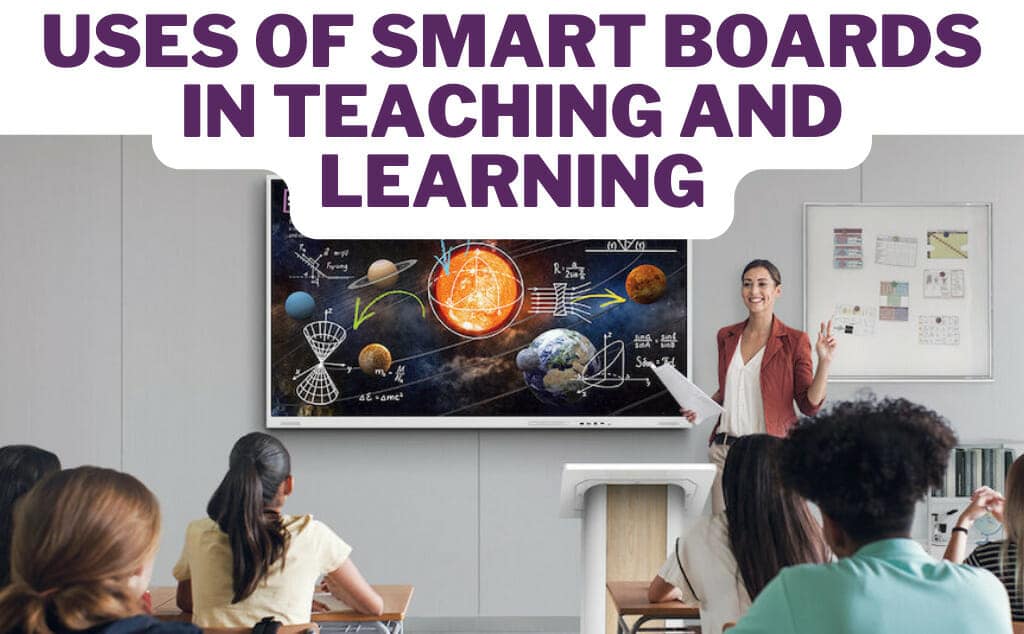- Introduction
- 1. Visual Learning and Multimedia Engagement
- 2. Interactive Learning Activities and Critical Thinking
- 3. Real-Time Collaboration and Communication
- 4. Access to Online Resources and Updated Information
- 5. Personalized Learning and Student Engagement
- 6. Enhanced Visual Representation of Complex Concepts
- 7. Instant Feedback and Assessment
- 8. Record and Replay Lessons for Enhanced Learning
- 9. Multilingual Support and Inclusivity
- 10. Environmental Sustainability and Reduced Paper Usage
- 11. Facilitating Remote Learning
- 12. Integration with Other Devices and Educational Apps
- 13. Teacher Professional Development and Training
- 14. Increased Classroom Engagement and Participation
- 15. Preparing Students for the Digital Age
- Conclusion
- FAQs
Introduction
Smart boards, also known as interactive whiteboards, have transformed the traditional classroom by integrating technology with education. These interactive displays offer numerous benefits that enhance the teaching and learning experience for both educators and students. In this article, we explore the various uses of smart boards, ranging from visual learning aids to fostering real-time collaboration, personalized learning, and environmental sustainability.
1. Visual Learning and Multimedia Engagement
Smart boards facilitate visual learning by presenting information through multimedia content, such as images, videos, and animations. This approach caters to diverse learning styles, making lessons more engaging and improving students’ understanding and retention of the material. For more information on the use of smart boards in visual learning, check out EdSurge.
2. Interactive Learning Activities and Critical Thinking
With the ability to support interactive quizzes, games, and simulations, smart boards encourage active participation in the classroom. These activities promote critical thinking and problem-solving skills, allowing students to grasp complex concepts more effectively.
3. Real-Time Collaboration and Communication
Smart boards enable real-time collaboration among students and teachers. Group discussions and brainstorming sessions become more interactive and fruitful, fostering teamwork, communication, and creativity in the learning environment.
4. Access to Online Resources and Updated Information
One of the significant advantages of smart boards is their internet connectivity, providing access to a vast array of online educational resources. Educators can incorporate up-to-date and diverse information into their lessons, enriching the learning experience for students. To explore a wide range of educational resources available for smart boards, visit TeachThought
5. Personalized Learning and Student Engagement
Smart boards allow teachers to customize lessons to meet the individual needs of students. This personalized learning approach enhances student engagement and academic performance, as educators can tailor the content and pace according to each student’s abilities.
6. Enhanced Visual Representation of Complex Concepts
Subjects like mathematics, science, and geography benefit from the enhanced visual representation offered by smart boards. Teachers can draw diagrams, graphs, and charts in real-time, making abstract ideas more tangible and understandable to students.
7. Instant Feedback and Assessment
Smart boards facilitate instant feedback and assessment during class sessions. Teachers can conduct quizzes and polls to gauge students’ understanding, enabling them to adjust their teaching strategies accordingly.
8. Record and Replay Lessons for Enhanced Learning
The recording feature of smart boards allows teachers to capture their lessons. These recordings benefit absent students, who can catch up on missed content, and educators, who can review their teaching methods for improvement.
9. Multilingual Support and Inclusivity
For classrooms with diverse language backgrounds, smart boards can display content in multiple languages. This inclusivity fosters a supportive and accommodating learning environment for non-native English speakers.
10. Environmental Sustainability and Reduced Paper Usage
Smart boards contribute to environmental sustainability by reducing the need for paper. Unlike traditional chalkboards and printed materials, smart boards rely on digital resources, promoting awareness of environmental issues among students.
11. Facilitating Remote Learning
During emergencies or unforeseen events, smart boards enable remote learning. This flexibility ensures continuous education and minimizes disruptions to the learning process.
12. Integration with Other Devices and Educational Apps
Smart boards seamlessly integrate with other devices, such as computers, tablets, and smartphones. This compatibility allows teachers to leverage a wide range of educational apps and software to enhance their lessons.
13. Teacher Professional Development and Training
To make the most of smart board technology, teachers can attend workshops and training sessions. These opportunities help educators maximize the potential of interactive whiteboards and refine their teaching techniques.
14. Increased Classroom Engagement and Participation
The interactive nature of smart boards naturally boosts classroom engagement. Students become more attentive and participative during lessons, leading to a more dynamic and lively learning environment.
15. Preparing Students for the Digital Age
By incorporating smart boards into the classroom, educators equip students with essential digital skills. Familiarity with technology and interactive learning tools prepares students for success in an increasingly digital world.
Conclusion
Smart boards have emerged as a transformative tool in modern education, offering a multitude of benefits that enrich the teaching and learning experience. From facilitating visual learning and real-time collaboration to providing personalized instruction and promoting environmental sustainability, interactive whiteboards have become an integral part of the 21st-century classroom.
FAQs
- Suitability of Smart Boards for Different Age Groups?Smart boards are adaptable for various age groups, from elementary to higher education, catering to their unique learning needs.
- Can Smart Boards Replace Traditional Teaching Methods?While smart boards complement traditional teaching methods, they are not intended to fully replace them. Rather, they enhance the effectiveness of conventional instruction.
- Is Special Training Required to Use Smart Boards Effectively?While basic usage is intuitive, many educational institutions offer training to ensure teachers can leverage smart boards to their full potential.
- Potential Downsides of Using Smart Boards?Challenges include technical malfunctions, the risk of overreliance on technology, and the initial cost of implementation.
- How Do Smart Boards Benefit Students with Disabilities?Smart boards can be adapted with accessibility features, promoting an inclusive learning environment that accommodates students with disabilities.
